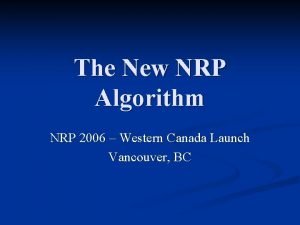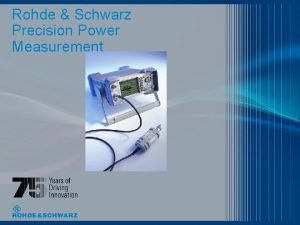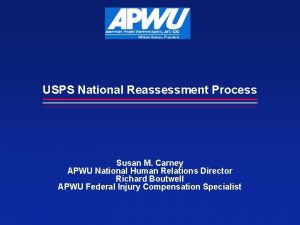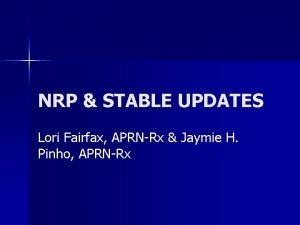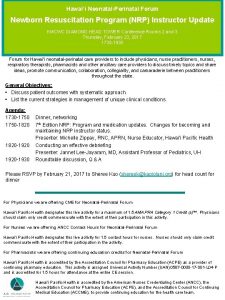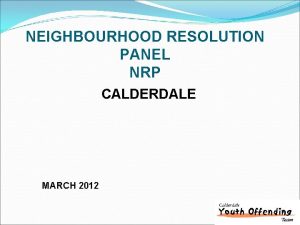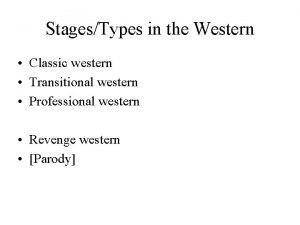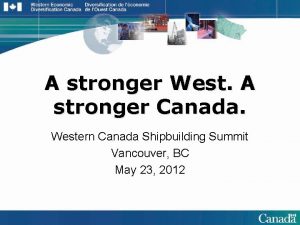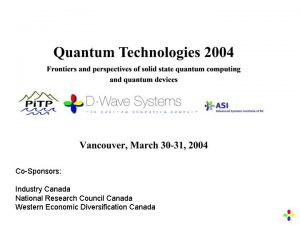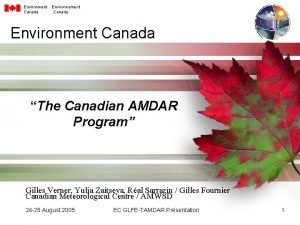The New NRP Algorithm NRP 2006 Western Canada
























































- Slides: 56

The New NRP Algorithm NRP 2006 – Western Canada Launch Vancouver, BC

Objectives n n Show the new 2006 Resuscitation algorithm Discuss the NRP 2006 Initial Steps What has changed since NRP 2000 How specific Canadian Expert Committee recommendations affect the algorithm

Objectives n The Initial Steps n Decide if resuscitation is needed n Provide initial steps of resuscitation n Decide if / when oxygen should be given n Exception to “dry the baby” n Resuscitate a newborn when meconium is present

The Canadian Expert Committee n n National guidelines to neonatal resuscitation across several continents are based on the consensus statements of the International Liaison Committee on Resuscitation (ILCOR). Each country is expected to develop guidelines that reflect their own context.


Is resuscitation needed? Routine Care

Is resuscitation needed? NRP 2006 Routine Care NRP 2000 Routine Care

Is resuscitation needed? NRP 2006 Routine Care Oxygen is gone …

Routine Care NRP 2006 NRP 2000

Normal transition Gestational age Birth weight Sp. O 2 >75% Sp. O 2 >90% 37. 7 3036 g 207 s 343 s . Slide courtesy of ACo. RN 2006 Kamlin, O'Donnell, Davis, Morley. SPR 2005. A 2050 ACo. RN © 2006

Normal transition Rabi Y, Yee W, Chen SY, Singhal N. J Pediatrics 2006 148( 5): 590 -594 Slide courtesy of ACo. RN 2006 ACo. RN © 2006

Normal transition Rabi Y, Yee W, Chen SY, Singhal N. J Pediatrics 2006 148( 5): 590 -594 Slide courtesy of ACo. RN 2006 ACo. RN © 2006

Normal transition Rabi Y, Yee W, Chen SY, Singhal N. J Pediatrics 2006 148( 5): 590 -594 Slide courtesy of ACo. RN 2006 ACo. RN © 2006

Canadian Expert Committee n “Oxygen should be administered to babies who remain cyanotic at 90 seconds of age”

Routine Care NRP 2006

Routine Care NRP 2006 NRP 2000

Routine Care NRP 2006 What if this “well baby” baby remains cyanotic > 90 sec?

The initial steps 2006

The initial steps 2006 2000

The initial steps … no oxygen given Exception to “dry the baby” 2006

First 30 seconds NRP algorithm Routine Care Wait 90 seconds

First 30 seconds NRP algorithm Routine Care Observational Care

First 30 seconds NRP algorithm Routine Care Observational Care … at 90 seconds

The persistently cyanotic baby

Oxygen administration n n Only central cyanosis requires intervention. Acrocyanosis does not indicate hypoxemia. “If the baby is breathing but appears blue, administration of supplemental oxygen is indicated” at 90 seconds… “Supplemental oxygen also may be needed when respirations are being assisted” at 90 seconds… “There is evidence that resuscitation with air is as effective as with 100% oxygen …”

Oxygen administration

Blending oxygen

Blending oxygen

“Dry-exposed” Resuscitation Gestational Age > 28 w

“Dry-exposed” Resuscitation Gestational Age > 28 w

“Wet-in-bag” Resuscitation Gestational Age < 28 w

“Wet-in-bag” Resuscitation Gestational Age < 28 w

“Wet-in-bag” Resuscitation Gestational Age < 28 w

“Wet-in-bag” Resuscitation Gestational Age < 28 w

“Wet-in-bag” Resuscitation n n 88 infants Infants placed in the polyurethane bags were less likely to have a temp <36. 40 C on admission 44 vs. 70% (p<0. 001) Better if room at 25 -26 o. C Gestational Age ≤ 28 w Knobel et al. Heat loss prevention for preterm infants in the delivery room. J Perinat 2005; 25: 304 -308

“Wet-in-bag” Resuscitation

“Wet-in-bag” Resuscitation

“Wet-in-bag” Resuscitation n Polyethylene bags significantly reduce the risk of hypothermia in infants <28 weeks on admission to NICU n RR 0. 63 (C. I. 0. 42 -0. 93) NNT 4 n

“Wet-in-bag” Resuscitation CPS n n n Maintenance of DR at 25 to 26 o. C will diminish heat loss If GA < 28 w place him below the neck in a polyethylene bag All babies (term/preterm) under radiant warmer by 10 min should have servocontrol probe Gestational Age < 28 w

The Apgar Score

Resuscitation when meconium present

The Initial Steps Or wet in bag? … at 90 seconds

Preterm < 32 weeks n n Use blended oxygen and air, and a pulse oximeter Begin PPV with Fi. O 2 between 0. 21 and 1. 00. Studies are lacking to be more precise. Adjust Fi. O 2 to achieve Sp. O 2 gradually increasing towards 90%. Decrease the Fi. O 2 as Sp. O 2 rises over 95% If the heart rate does not respond by increasing rapidly to > 100 bpm, correct any ventilation problem and use Fi. O 2 1. 00.

n Should oxygen be administered to babies receiving chest compressions?


Medications NRP 2006 St. John’s - Newfoundland

Medications 2: 1000 newborns

NRP 2006 When to use oxygen: Cyanotic at 90 seconds (supplemental) Receiving chest compressions (100%)

Epinephrine ! “If the heart rate remains below 60 bpm despite administration of ventilation and chest compressions your first action is to ensure that ventilation and chest compressions are being given optimally and that you are using 100% oxygen”

Epinephrine Route n UVC n low position n ETT n Slow absorption → higher dose? n Poor evidence, expert opinion n Intraosseous n Outpatient taught setting; limited data → not

Epinephrine - Administration CPS: n “First dose via ETT while preparing for insertion of UVC” 3 m. L syringe n 1 m. L/kg of 1: 10, 000 epinephrine n n “When given via UVC …” 1 m. L syringe n 0. 1 m. L/kg of 1: 10, 000 epinephrine n Follow with 5 m. L of 0. 9& saline flush n

Epinephrine Administration Shows recommendation in CPS NRP addendum, 2006

Epinephrine Administration Can repeat after 3 -5 minutes

Shock / hypovolemia ! “If the baby appears in shock and is not responding to resuscitation administration of a volume expander may be indicated”

If no improvement

 Nrp algorithm
Nrp algorithm Rohde & schwarz nrp z81
Rohde & schwarz nrp z81 Sim.petra
Sim.petra National reassessment program
National reassessment program How to become an nrp instructor mentor
How to become an nrp instructor mentor Mrsopa
Mrsopa Nrp forum
Nrp forum Self-service wne
Self-service wne Girl scouts of western new york
Girl scouts of western new york Bluecross blueshield of western new york
Bluecross blueshield of western new york Difference between a star and ao star algorithm
Difference between a star and ao star algorithm Sweep line algorithm cp algorithm
Sweep line algorithm cp algorithm Hình ảnh bộ gõ cơ thể búng tay
Hình ảnh bộ gõ cơ thể búng tay Slidetodoc
Slidetodoc Bổ thể
Bổ thể Tỉ lệ cơ thể trẻ em
Tỉ lệ cơ thể trẻ em Chó sói
Chó sói Glasgow thang điểm
Glasgow thang điểm Chúa yêu trần thế alleluia
Chúa yêu trần thế alleluia Môn thể thao bắt đầu bằng chữ f
Môn thể thao bắt đầu bằng chữ f Thế nào là hệ số cao nhất
Thế nào là hệ số cao nhất Các châu lục và đại dương trên thế giới
Các châu lục và đại dương trên thế giới Công thức tiính động năng
Công thức tiính động năng Trời xanh đây là của chúng ta thể thơ
Trời xanh đây là của chúng ta thể thơ Cách giải mật thư tọa độ
Cách giải mật thư tọa độ 101012 bằng
101012 bằng Phản ứng thế ankan
Phản ứng thế ankan Các châu lục và đại dương trên thế giới
Các châu lục và đại dương trên thế giới Thơ thất ngôn tứ tuyệt đường luật
Thơ thất ngôn tứ tuyệt đường luật Quá trình desamine hóa có thể tạo ra
Quá trình desamine hóa có thể tạo ra Một số thể thơ truyền thống
Một số thể thơ truyền thống Cái miệng nó xinh thế
Cái miệng nó xinh thế Vẽ hình chiếu vuông góc của vật thể sau
Vẽ hình chiếu vuông góc của vật thể sau Nguyên nhân của sự mỏi cơ sinh 8
Nguyên nhân của sự mỏi cơ sinh 8 đặc điểm cơ thể của người tối cổ
đặc điểm cơ thể của người tối cổ Ví dụ về giọng cùng tên
Ví dụ về giọng cùng tên Vẽ hình chiếu đứng bằng cạnh của vật thể
Vẽ hình chiếu đứng bằng cạnh của vật thể Vẽ hình chiếu vuông góc của vật thể sau
Vẽ hình chiếu vuông góc của vật thể sau Thẻ vin
Thẻ vin đại từ thay thế
đại từ thay thế điện thế nghỉ
điện thế nghỉ Tư thế ngồi viết
Tư thế ngồi viết Diễn thế sinh thái là
Diễn thế sinh thái là Các loại đột biến cấu trúc nhiễm sắc thể
Các loại đột biến cấu trúc nhiễm sắc thể So nguyen to
So nguyen to Tư thế ngồi viết
Tư thế ngồi viết Lời thề hippocrates
Lời thề hippocrates Thiếu nhi thế giới liên hoan
Thiếu nhi thế giới liên hoan ưu thế lai là gì
ưu thế lai là gì Sự nuôi và dạy con của hổ
Sự nuôi và dạy con của hổ Sự nuôi và dạy con của hươu
Sự nuôi và dạy con của hươu Sơ đồ cơ thể người
Sơ đồ cơ thể người Từ ngữ thể hiện lòng nhân hậu
Từ ngữ thể hiện lòng nhân hậu Thế nào là mạng điện lắp đặt kiểu nổi
Thế nào là mạng điện lắp đặt kiểu nổi New algorithm
New algorithm Split direct speech
Split direct speech New york pennsylvania new jersey delaware
New york pennsylvania new jersey delaware
